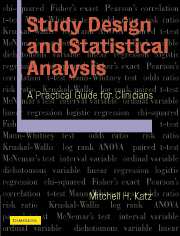
-
Select format
-
- Publisher:
- Cambridge University Press
- Publication date:
- 05 August 2012
- 22 June 2006
- ISBN:
- 9780511616761
- 9780521534079
- Dimensions:
- Weight & Pages:
- Dimensions:
- (246 x 189 mm)
- Weight & Pages:
- 0.444kg, 202 Pages
You may already have access via personal or institutional login
Book description
This book takes the reader through the entire research process: choosing a question, designing a study, collecting the data, using univariate, bivariate and multivariable analysis, and publishing the results. It does so by using plain language rather than complex derivations and mathematical formulae. It focuses on the nuts and bolts of performing research by asking and answering the most basic questions about doing research studies. Making good use of numerous tables, graphs and tips, this book helps to demystify the process. A generous number of up-to-date examples from the clinical literature give an illustrated and practical account of how to use multivariable analysis.
Reviews
'This is not a textbook of statistics. Neither is it accurate to say that it is a mere step-by-step 'how-to' guide. Rather it falls comfortably between the two extremes combining intelligent insight and practical know-how illustrated by plenty of 'real' examples taken from fully referenced published studies. … this book is very well laid out in the sense that it helps the reader to find exactly what is needed with ease. Thus, it is very easy to delve into this book and find what is the right test one needs and with the information provided, be confident of how and why that test is appropriate. … One striking feature of this book is how 'un-mathematical' it appears. It is not a book abounding in statistical equations. Instead, where equations are presented they are worded rather than expressed in the standard (and for some off-putting) algebraic form. This and the explanations that ensue, seek to spark the reader's interest rather than encumber him or her with calculations. In these days when statistical software packages tend to obfuscate as readily as the produce output and when a greater appreciation of what statistics is really about is needed, this book is a particularly welcome aid to those who want to understand what they are doing.'
Source: Journal of Biosocial Science
Contents
Metrics
Full text views
Full text views help Loading metrics...
Loading metrics...
* Views captured on Cambridge Core between #date#. This data will be updated every 24 hours.
Usage data cannot currently be displayed.
Accessibility standard: Unknown
Why this information is here
This section outlines the accessibility features of this content - including support for screen readers, full keyboard navigation and high-contrast display options. This may not be relevant for you.
Accessibility Information
Accessibility compliance for the PDF of this book is currently unknown and may be updated in the future.


